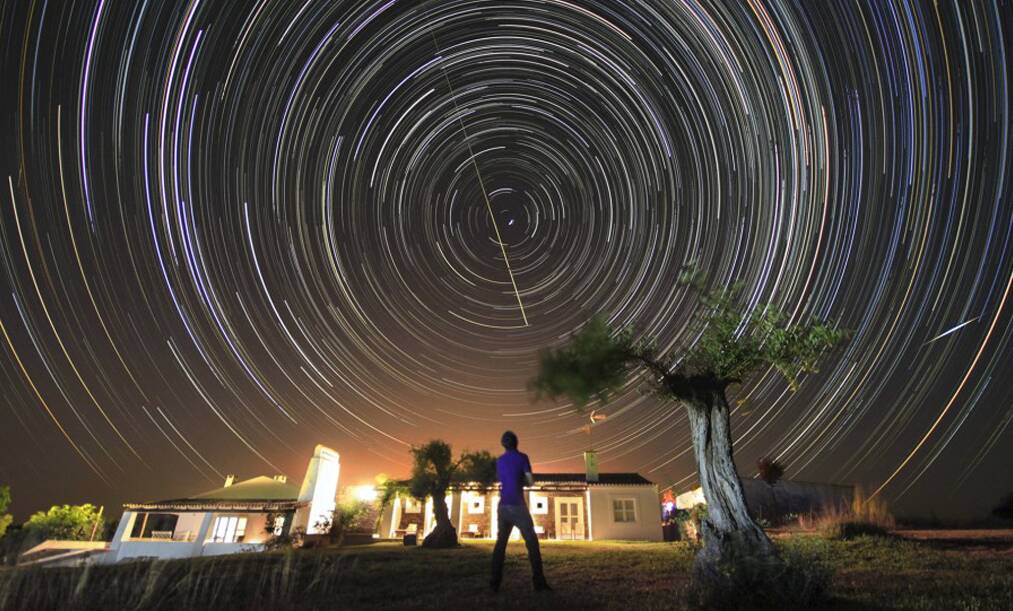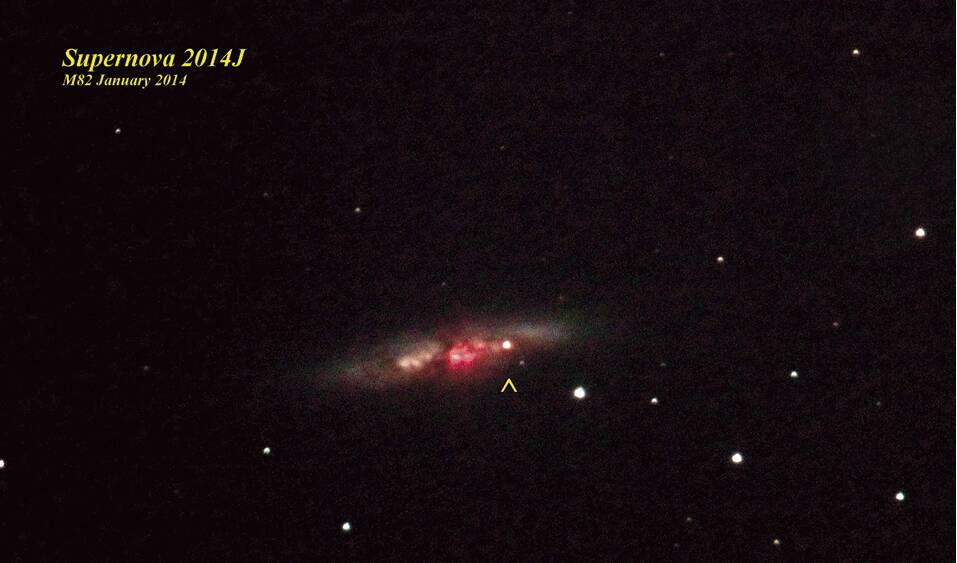
All over the world specialists in astronomy and photography turn their talents to the superb pictures created by the movements of our stars and planets.
Subscribe now for unlimited access.
or signup to continue reading

One such specialist is Miguel Claro of Portugal.
He sent me this startling picture (above) and description.
This self portrait star trail was taken in Falperras Hill, a rural hotel in Mourão, one of the regions covered by the Alqueva Dark sky Reserve, in Portugal.
In this polar star trail we could easily identify the Polaris star – who indicates the north – not only because the star vortex seems to spin around this central star, but also due to the light path left by a satellite, not the ISS, that seems to point to this same star.
In the sky picture is also visible a strong flare left by satellite Iridium 66, with a magnitude of -4.5.
In the land, we could see the Monte Falperras hotel. Myself enjoying this beautiful and peaceful moment – full of meaning – as well as two olive trees, the much typical tree available in the fields of Alentejo region. – Miguel Claro
From Wikipedia: SN 2014J is a type-Ia supernova in Messier 82, the Cigar Galaxy, M82, discovered in mid-January 2014. It is the closest type-Ia supernova discovered in the past 42 years.
It was discovered accidentally during an undergraduate teaching session at the University of London Observatory. SN 2014J is currently the subject of an intense observing campaign by professional astronomers and is bright enough to be seen by amateur astronomers.
On January 31, 2014 SN2014J stopped brightening, reaching its peak brightness at magnitude 10.5.
The supernova was discovered by astronomer Steve Fossey, of University College London. Fossey was training four undergraduate students Ben Cooke, Guy Pollack, Matthew Wilde, and Thomas Wright to use a small 0.35-metre (14 in) telescope.
The discovery was serendipitous, because Fossey was not searching for supernovae and wanted to take advantage of a short gap in the cloud cover.
At 7.20pm GMT on January 21, 2014, Fossey and his students noticed a bright new star in their images of the galaxy Messier 82, also known as the Cigar Galaxy.
Their discovery was reported to the International Astronomical Union's Central Bureau for Astronomical Telegrams, who confirmed that they were the first to spot the supernova and assigned it the name SN 2014J as the 10th supernova discovered in 2014.
At a distance of 11.5 ± 0.8 million light-years SN 2014J is one of the closest supernovae seen for decades. It is the closest type Ia supernova since 1972, and the closest supernova of any type since 2004.

